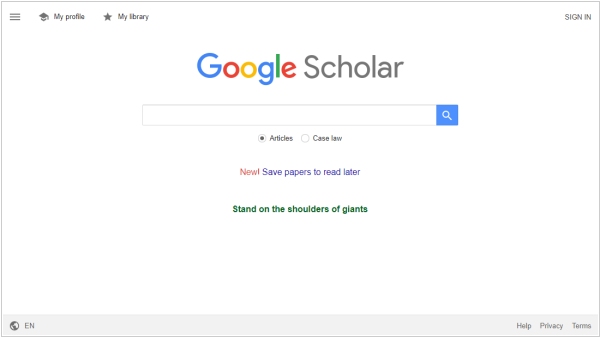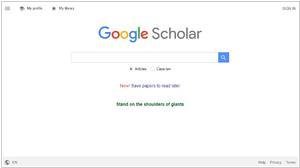Google Scholar vs JSTOR
Last updated: July 09, 2023
Google Scholar and JSTOR are both valuable platforms for accessing scholarly literature, but they have distinct differences in terms of their content coverage, search capabilities, and accessibility. One key difference lies in their content sources and coverage. Google Scholar indexes a wide range of scholarly literature, including articles, theses, conference papers, preprints, and more. It aggregates content from various publishers, universities, and institutional repositories. While Google Scholar provides a broad coverage of scholarly resources, the content availability and quality can vary, as it includes both open access and subscription-based articles. On the other hand, JSTOR is a digital library that focuses on academic journals, books, and primary sources. It offers a curated collection of scholarly content from reputable publishers and institutions. JSTOR's content is primarily subscription-based, ensuring high-quality and reliable scholarly resources.
Another notable difference between Google Scholar and JSTOR lies in their search capabilities and features. Google Scholar provides a powerful search engine specifically designed for scholarly literature. It offers advanced search options, citation tracking, and the ability to find related articles. Google Scholar also provides links to full-text articles when available, which can be accessed from various sources, including publisher websites, institutional repositories, and open access platforms. JSTOR, on the other hand, offers a more focused search experience within its curated collection. It provides advanced search filters and options to refine search results by publication type, discipline, date range, and more. JSTOR also offers additional features like text mining capabilities and the ability to save and organize articles in a personal workspace.
In terms of accessibility, there is a difference between Google Scholar and JSTOR. Google Scholar is freely accessible to anyone with an internet connection, allowing users worldwide to search and access scholarly resources. While some articles indexed by Google Scholar may require a subscription or purchase for full access, it still provides access to a considerable amount of open access content. JSTOR, on the other hand, primarily operates on a subscription-based model. It offers access to its collection through institutional subscriptions or individual purchases. JSTOR is commonly available through academic libraries, universities, and research institutions. The availability of JSTOR's content may be restricted to users affiliated with institutions that have subscribed to the service.
Another notable difference between Google Scholar and JSTOR lies in their search capabilities and features. Google Scholar provides a powerful search engine specifically designed for scholarly literature. It offers advanced search options, citation tracking, and the ability to find related articles. Google Scholar also provides links to full-text articles when available, which can be accessed from various sources, including publisher websites, institutional repositories, and open access platforms. JSTOR, on the other hand, offers a more focused search experience within its curated collection. It provides advanced search filters and options to refine search results by publication type, discipline, date range, and more. JSTOR also offers additional features like text mining capabilities and the ability to save and organize articles in a personal workspace.
In terms of accessibility, there is a difference between Google Scholar and JSTOR. Google Scholar is freely accessible to anyone with an internet connection, allowing users worldwide to search and access scholarly resources. While some articles indexed by Google Scholar may require a subscription or purchase for full access, it still provides access to a considerable amount of open access content. JSTOR, on the other hand, primarily operates on a subscription-based model. It offers access to its collection through institutional subscriptions or individual purchases. JSTOR is commonly available through academic libraries, universities, and research institutions. The availability of JSTOR's content may be restricted to users affiliated with institutions that have subscribed to the service.
4
Google Scholar provides a simple way to broadly search for scholarly literature. Search across a wide variety of disciplines and sources: articles, theses, papers. Allows to create personal online library
12
JSTOR is a digital library containing digitized back issues of academic journals, books and primary sources, and current issues of journals. It provides full-text searches of almost 2,000 journals. More than 8,000 institutions in more than 160 countries have access to JSTOR; most access is by subscription, but some older public domain content is freely available to anyone, and in 2012 JSTOR launched a program providing limited no-cost access to old articles for individual scholars and researchers who register.
Google Scholar vs JSTOR in our news:
2004. Google starts scientific paper search engine Scholar

Google has launched Google Scholar - academic search engine developed with the aim of providing a simple way to search for scholarly literature such as articles, theses, books, and conference papers. This search engine can be useful for researchers, students, and academics due to its ability to search for scholarly content across multiple disciplines and sources, including academic publishers, online repositories, and universities. Google Scholar's algorithms are designed to rank search results based on the relevance of the content, making it easier for users to find the most relevant research materials. It allows not only to search but also to create personal online article library with folders. It could be a crucial tool for researchers and students around the world, with millions of users relying on it to find scholarly literature in their respective fields.


